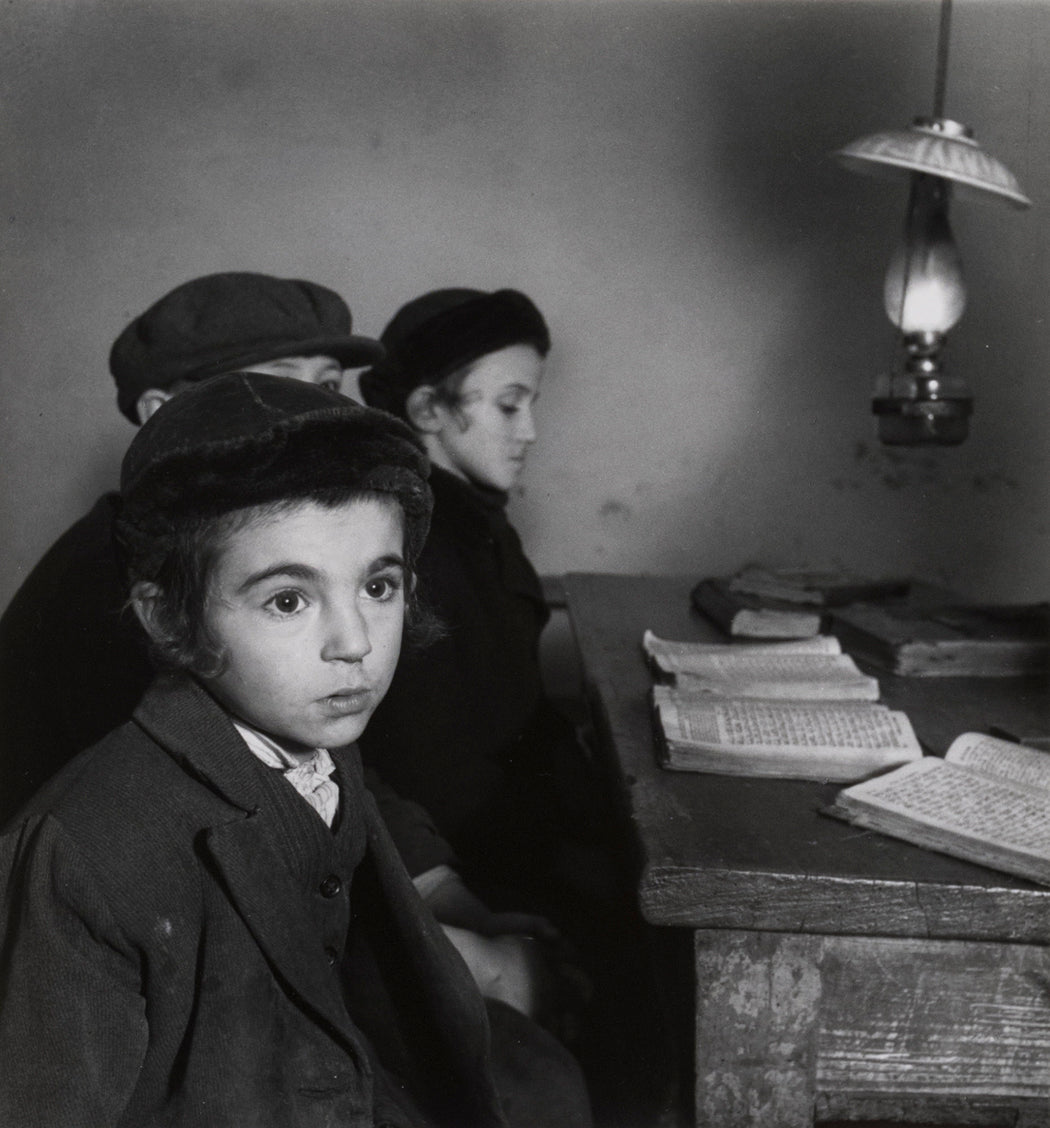
Roman Vishniac
Heder in Tjacoro, Carpatho, Ukraine by Roman Vishniac
 Toronto, ON)
Toronto, ON)
Learn about our Shipping & Returns policy.
Have a question? Read our FAQ.
- Artwork Info
- About the Artist
- About this Photograph
- Artist News
-
1937
Gelatin silver print
Signed, titled, and dated, in ink, au recto
Printed circa 1985 -
Born in 1897 to a wealthy Russian-Jewish family, Vishniac immigrated to Berlin in 1920 in the aftermath of the Russian Revolution. As an amateur photographer, he took to the streets with his camera throughout the 1920s and ’30s, offering astute, often humorous visual commentary on his adopted city and experimented with new and modern approaches to framing and composition. Documenting the rise of Nazi power, he focused his lens on the signs of oppression and doom that soon formed the backdrop of his Berlin street photography. From 1935 to 1938, while living in Berlin and working as a biologist and science photographer, he was commissioned by the American Jewish Joint Distribution Committee (JDC), then the world’s largest Jewish relief organization, to photograph impoverished Jewish communities in Central and Eastern Europe. On New Year’s Day, 1941, he arrived in New York and soon opened a portrait studio. At the same time, he began documenting American Jewish communal and immigrant life and established himself as a pioneer in the field of photomicroscopy. In 1947, Vishniac returned to Europe and documented Jewish displaced persons camps and the ruins of Berlin. During this time, he also recorded the efforts of Holocaust survivors to rebuild their lives, and the work of the JDC and other Jewish relief organizations in providing them with aid and emigration assistance.
– Source: International Center of Photography
-
David Eckstein, the boy in the foreground of this photograph from circa 1937, would go on to endure five Nazi concentration camps before being liberated as a teenager by Soviet armed forces at the end of World War II. His entire family, aside from himself and one sibling, was murdered in the Holocaust. Roman Vishniac later recalled, “I watched this little boy for almost an hour, and in this moment I saw the whole sadness of the world.” Eckstein resettled in the United States in the 1950s, where he became a Buddhist.
This photograph was chosen as the cover image of Vishniac’s first book, Polish Jews: A Pictorial Record (1947).
- Adapted from International Center of Photography
-
Terror in focus: the Jewish photographer who captured the rise of Nazism - The Guardian, October 2018


